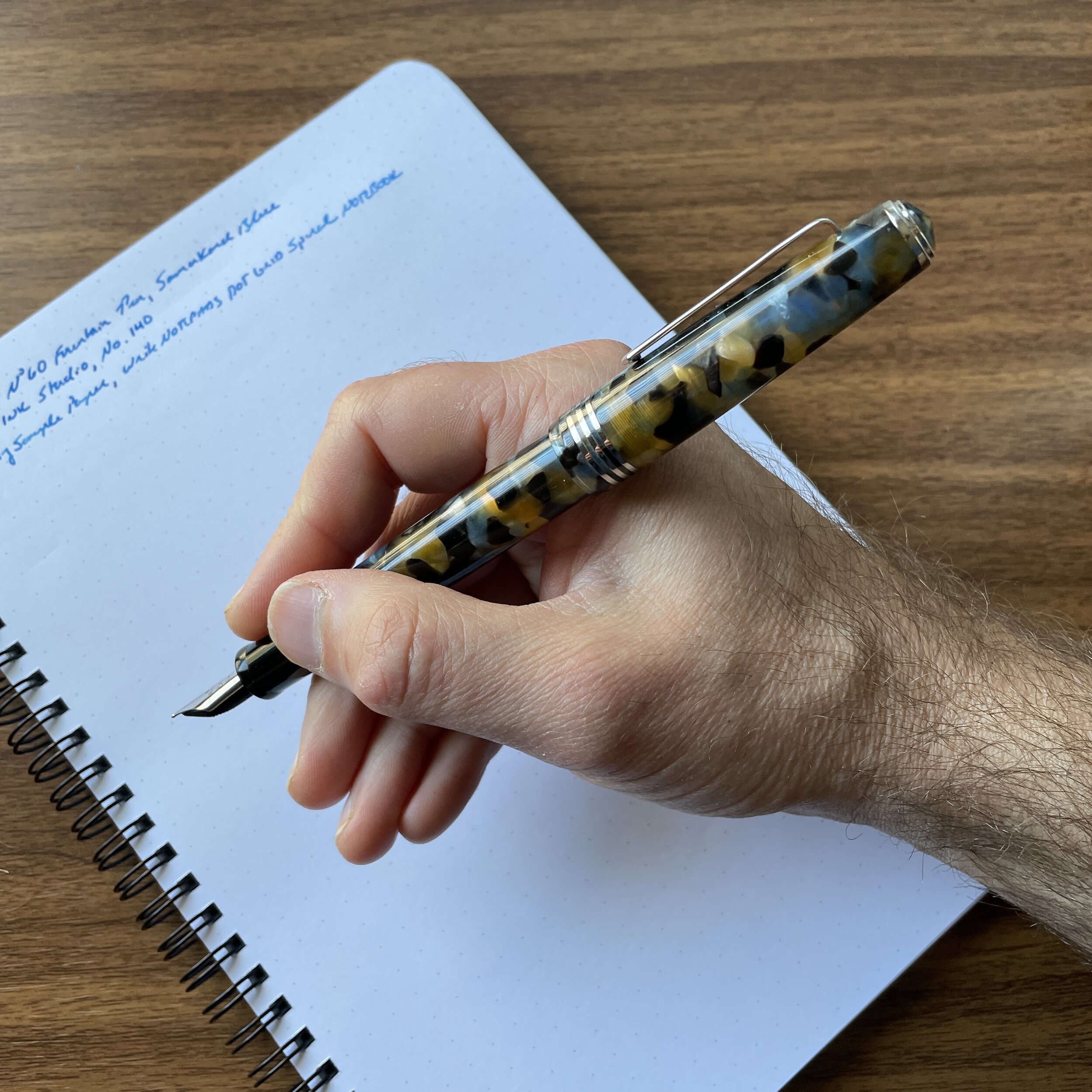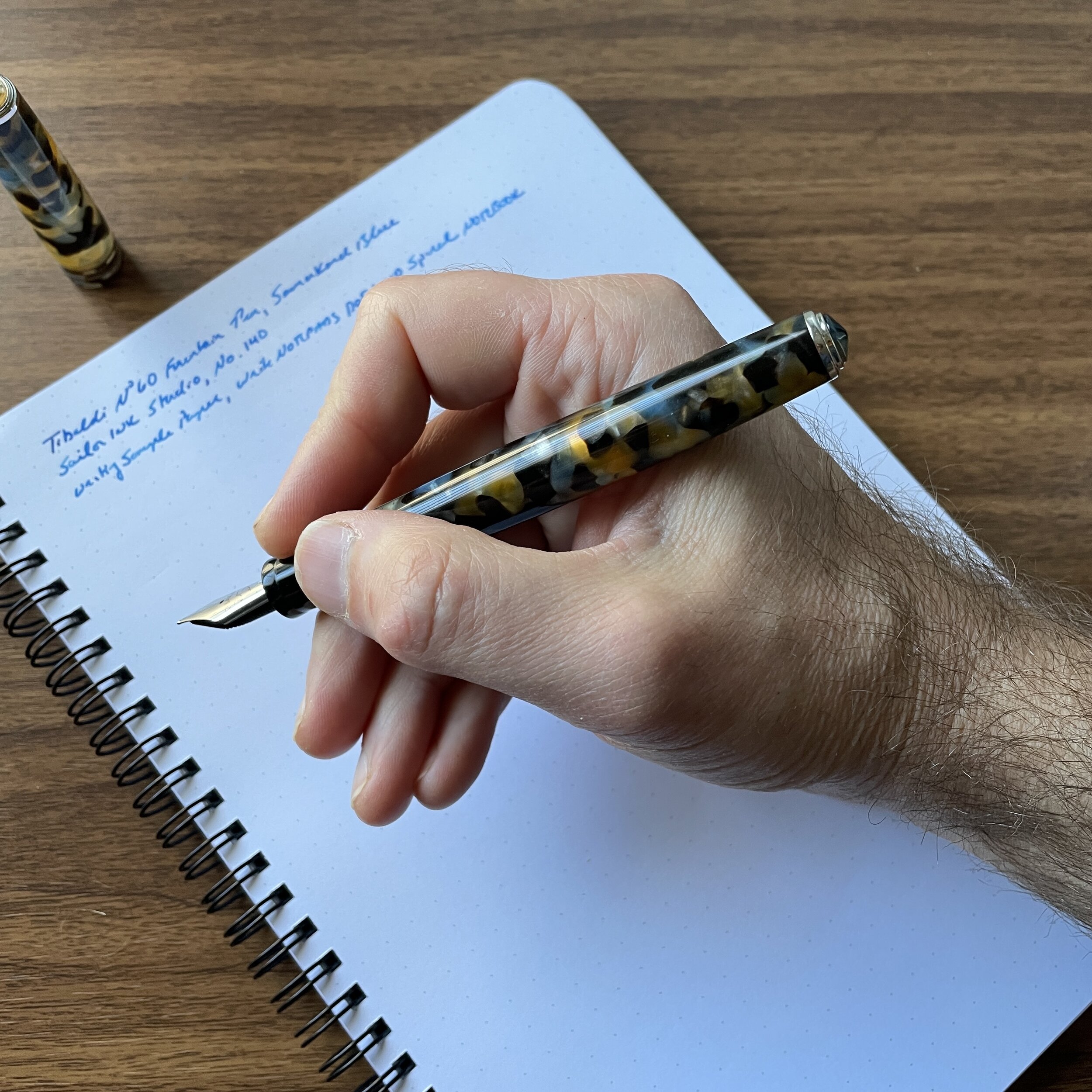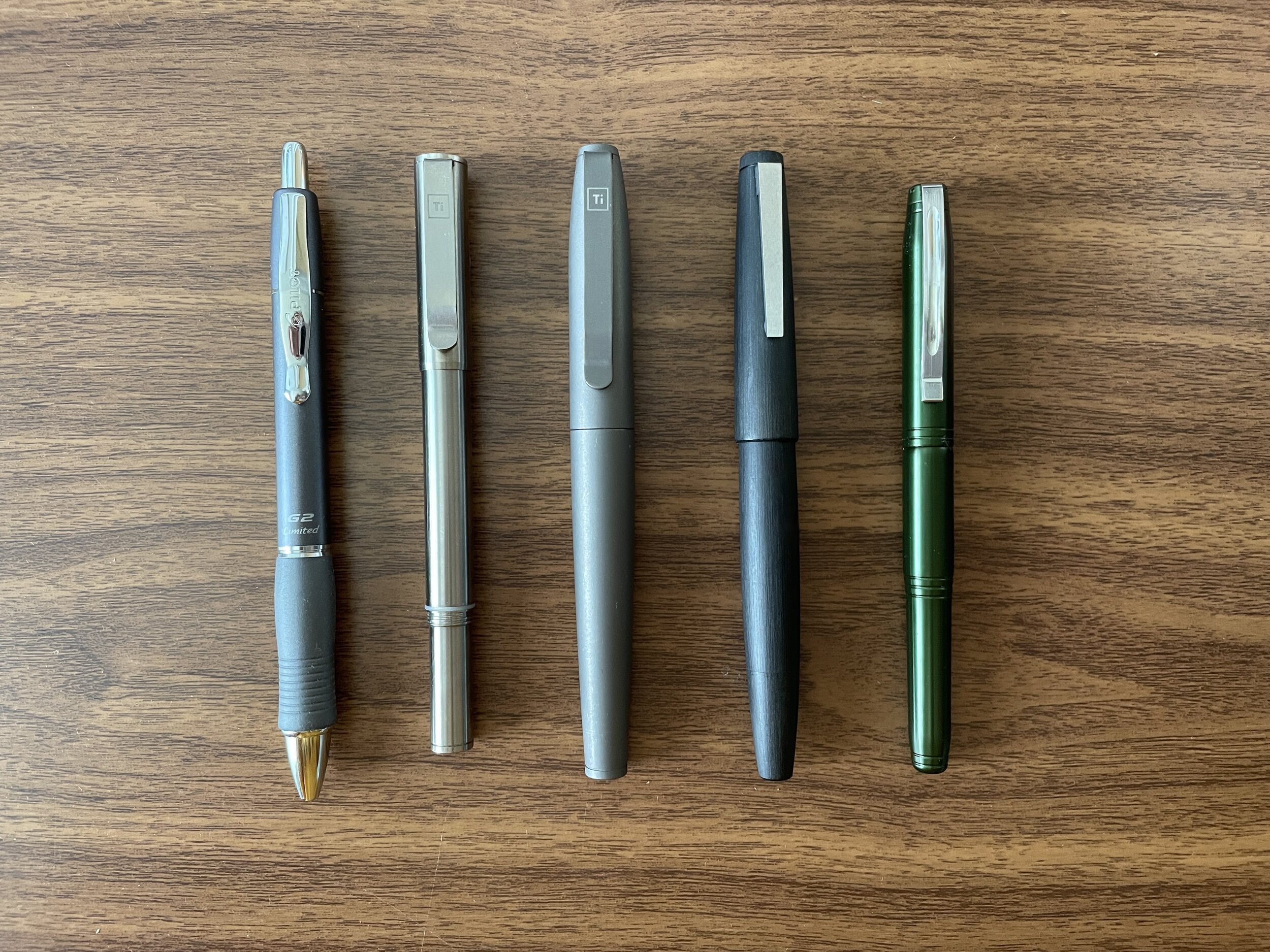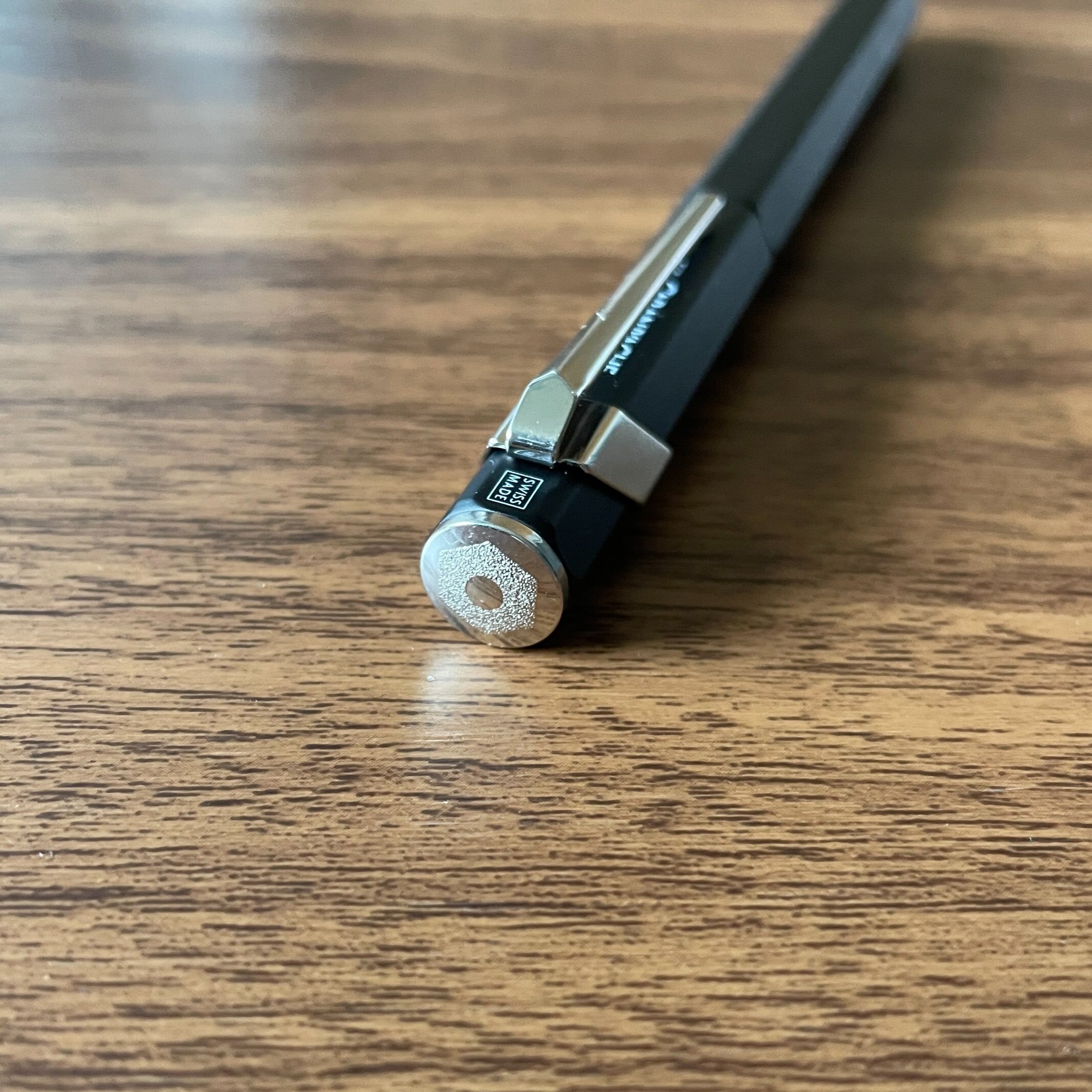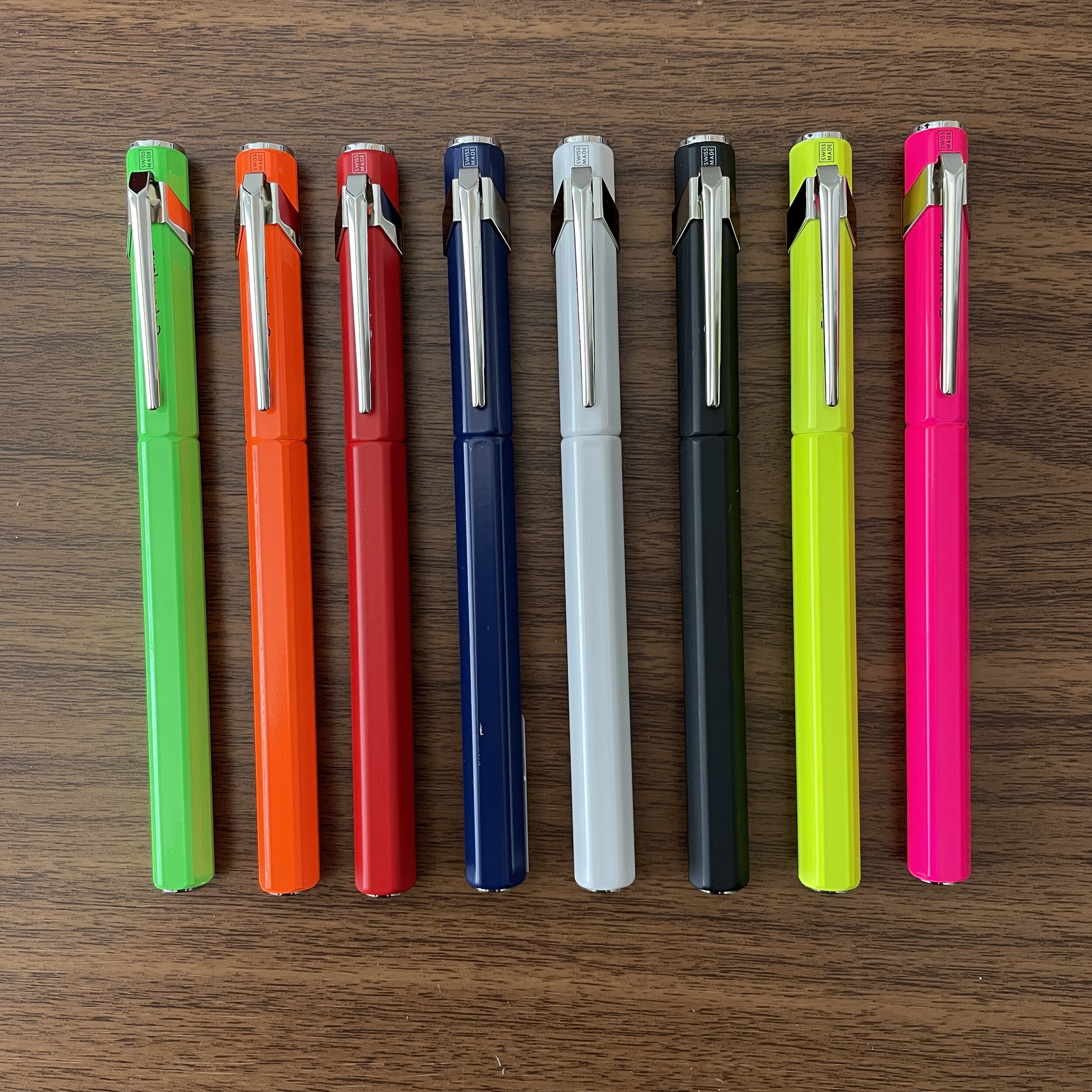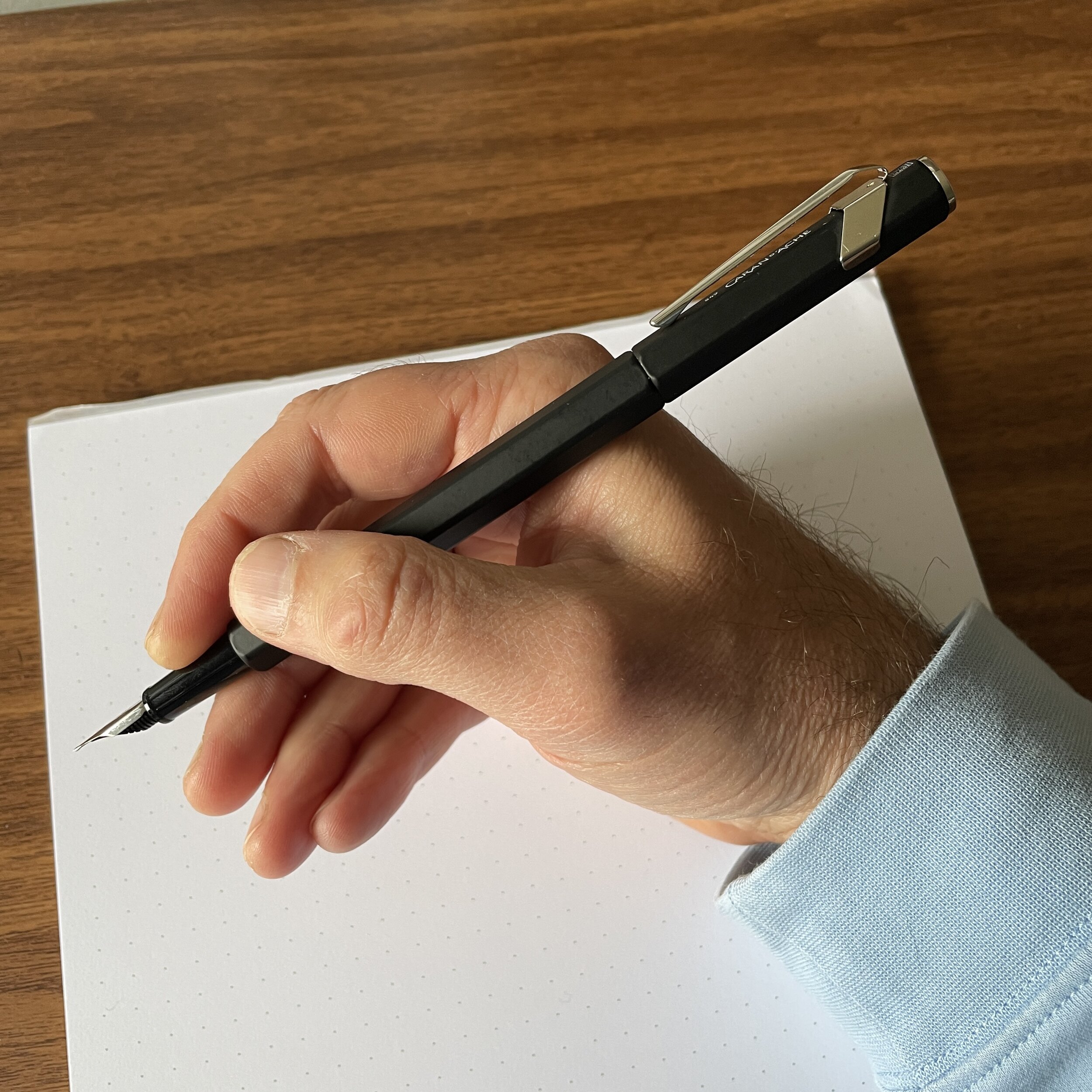Narwhal Pens appeared on the scene at the 2019 D.C. Pen Show and the 2020 Philadelphia Pen Show (two of the last ones before the pandemic hit), and since then have increased in popularity to the point where they are often discussed/recommended in the same breath as the TWSBI 580 and TWSBI ECO, which along with PenBBS make up the primary piston-filler recommendations below $75. My friend Bob over at My Pen Needs Ink was kind enough to loan me his Narwhal Original in “Hippocampus Purple” so that I could do my own review. While the design and color of this pen don’t appeal to me as much as the TWSBIs, the Narwhal writes well, holds a good bit of ink, and has a lot to recommend it, especially at the price point. Let’s dig in a bit more.
The Narwhal Original, far left, shown here with two comparable pens: the TWSBI 580 (right) and the PenBBS 456 (center).
Visual Appeal and Design Aesthetic
Narwhal released its “Original” Fountain Pen in four swirled acrylics with nautical/oceanic themes: Poseidon Blue, Hippocampus Purple, Merman Green, and Yellow Tang. Frankly, the colors were the main reason I did not acquire a Narwal pen until now. I tend to enjoy more understated designs, and the bright swirled acrylics - which remind me of some of the materials used on production line Edison Pens - didn’t appeal to me. They still don’t, but while I won’t be buying one of the four Originals, I did recently place an order for a Narwhal “Schuylkill”, their newer model with a more muted look.
Otherwise, the Narwal Original offers a good combination of quality and value for the price point. The pen features a rounded cap and barrel, with an engraved metal band around the body of the pen itself as opposed to around the cap. This touch gives the pen a higher-end look, almost reminiscent of the Visconti Homo Sapiens. I couldn’t find any manufacturing flaws in the acrylic, and the piston filler functioned as well as any TWSBI I have used.
Narwhal Original shown here compared against the TWSBI ECO.
Nib and Writing Experience
I understand that Narwhal makes their nibs in-house, and I had no issues with the medium stainless steel nib on this pen. The nib wrote a moderately wet line that I would call a full “Western Medium,” and maybe a little on the wide side of what I enjoy. (On the Narwhal I purchased, I opted for a fine nib.) Like the TWSBI ECO, Narwhal nibs are not interchangeable, so if you want the ability to easily swab out different nib units on the same pen, you will need to spring for the TWSBI 580.
I particularly enjoy the “leaping Narwhal” engraving on the nib, though the scrollwork makes the design look a bit busy. I would have opted for a cleaner look with only the logo, along with a nib size indicator.
Uncapped, the Narwhal sits in the hand at roughly the same length as a TWSBI 580, though the rounded barrel feels more like a slightly heavier ECO. This pen technically posts, but for me the cap doesn’t sit deeply enough on the piston knob to render it practical. The section is comfortable and I did not find the threads sharp at all. Provided you enjoy the look of the pen, the Narwal Original could become a satisfactory workhorse pen.
Takeaways and Where to Buy
I enjoyed the feel of the Narwhal Original piston filler, but I couldn’t get past the look of the acrylic on this particular model, which just isn’t my style. That said, the experience did prompt me to pick up a Narwhal Schuylkill. I plan to review that pen separately, since in addition to different acrylics, that model has a few different design touches. It’s crazy that we now have so many choices in the sub-$75 piston filler segment, but I love it!
Priced at only $45, the Narwhal Original sits between the TWSBI ECO and the TWSBI 580 price points, and is comparable to the higher-end PenBBS models. I would say that the Narwhal Original represents excellent value, especially if Narwhal can maintain a consistent level of quality control.
[Update: As of August 2022, Narwhal has rebranded the company as “Nahvalur”, and has released a new iteration of the “Original” piston filler in vacuum-filler form, dubbed the “Original Plus”. You can now purchase the Original Plus series, plus other select Nahvalur offerings, from the T.G.S. Curated Shop.]
As I mentioned above, the pen featured in this review was graciously loaned to me for review purposes by my friend Bob at My Pen Needs Ink. Bob reviewed this pen himself, and you can check out his review here. This post does not contain affiliate links.





